Morocco can generally be divided into three regions with contrasting climates. These areas feature significant differences in the weather. Reading this article will help you to work out what time of year is best for you in terms of the weather and what to look out for when planning your trip to Morocco. You’ll also find travel tips and weather charts for selected locations.
It may be helpful to imagine the Moroccan climate as a large plate of couscous royale. It’s warm, satisfies the appetite of the typical sun worshiper and is easy to digest. However, just like couscous, not every mouthful tastes exactly the same. Therefore, you’ll find the weather in Morocco can differ considerably between regions. Trying to give a generic weather forecast for the entire country is impossible in terms of accuracy.
A far better solution is to look at the weather region by region. Here’s the place to find information and weather data for popular destinations like Northern Morocco, the Rif Mountains, Essaouira, the Atlantic coast, Imlil and the High Atlas. You can also find out about the weather in the desert areas on the edge of the Sahara. Of course, there’s also detailed information on the weather in Marrakech.
Contents
A general overview: climate zones, temperatures and the best times to travel
The Moroccan weather can be divided into three different regions, all different and all subtypes of the sub-tropical climate. The main influence on a region’s weather is the distance from the sea, as well as and the role of the trade winds. Another variable that affects the Moroccan weather is the Atlas Mountains. The High Atlas forms a climate barrier, separating the mild climate of the coastal regions from the continental climate further inland. Also, the Atlas Mountains act as a natural border to the desert areas in the south, which have their own climate.
The Moroccan Atlantic coastal stretch enjoys a maritime climate with high annual rainfall. Differences between night time and daytime temperatures are less dramatic. The Atlantic Ocean is the reason for this more balanced climate, which can be explained by the fact that the ocean stores heat and releases it more slowly than air. Thanks to this influence, the weather on the Atlantic coast generally features hot summers with little rain and mild winters. Humidity is high.
Going further inland from the coast, the climate starts to change to typically continental weather. There’s more of a noticeable difference between night time and daytime temperatures, as well as the weather in summer and winter. In the middle of the country, humidity and annual rainfall levels are relatively low. In the deserts on the edge of the Sahara, the climate is hot and dry. This region hardly ever has any rainfall.
The weather in selected regions of Morocco
As already mentioned, the weather in Morocco changes not only from season to season, but also greatly between the different regions. In fact, you can only make one generalisation about the weather in Morocco: It’s always warmer than in Central Europe. This is a good sign when going on a Moroccan holiday. But if you’re planning any special activities, for example, a desert tour or mountain hiking in the High Atlas, you should keep track of the weather and check to see if the forecast is suitable for your tour.
The weather in Northern Morocco and Fes
The climate on the northern coast of Morocco and in the Rif mountains benefits from the balancing influence of the Mediterranean. Warm, dry summers and relatively mild winters are typical of this region. However, during the cold season, the north of the country is colder than the south. October to March also see more rain than the summer months.
In the Fez region, the Mediterranean doesn’t influence the weather much and there’s significantly less rain. However, summer days in the city at 410 meters above sea level can be very hot. The months for better weather in Fez are April to mid-July and September to mid-November. Even in January, the thermometer can climb to over 16°C. This makes it a tempting place to take a break from the European winter.
The weather in Agadir, Essaouira and on the Atlantic coast
The north-western part of the country and the long Atlantic coastal region experience long hot summers with hardly any rain. Temperatures average between 24-26° C and don’t fall much below 17°C at night. This means it’s the ideal Moroccan beach holiday weather. In winter, it gets a bit cooler and temperatures fall to around 16°C on average. It also rains more during this time.
The weather along the Moroccan coast changes the further south you go. In Essaouira, temperatures are similar to those in Rabat, with considerably less rain. This picturesque port city has its own special microclimate. With a breeze blowing every day, Essaouira is nicknamed the “Windy City”. Needless to say, it’s a good idea to pack a windproof or softshell jacket when visiting.
Despite the wind, the weather in Essaouira is pleasant and generally stable. Summers tend not to be unbearably hot and winters are milder than those further inland. Thanks to this well-balanced weather, Essaouira is the ideal place for a relaxing holiday at any time of the year; It’s also a good place to go with children.
South of Essaouira along Morocco’s Atlantic coast, the weather is mild and fairly predictable all year-round. Temperature differences between day and night are more pronounced in winter than in summer, but not as much so as for the continental climate in the middle of the country. By night, temperatures never fall below 7°C, while usually still over 20°C by day, even in winter.
The Moroccan weather inland
You’ll experience more continental weather conditions the further away from the coast you go and the nearer to the Atlas Mountains you are. Proximity to the Atlantic has a balancing influence on the weather. This is particularly noticeable in the marked temperature differences between day and night further inland. Depending on the altitude, temperatures can soar to over 40°C during the hottest summer months and fall below 0°C by night during the winter. Since the Atlas Mountains act as a climate barrier, there’s hardly any rainfall east of this mountain range.
The best weather for travelling will mainly depend on the specific region you want to visit. If you travel in winter, go prepared and take a sleeping bag. Another tip is to select heated hotels for your accommodation. If you’re planning day trips, destinations like the Ouzoud Falls are popular and appealing all year round.
The weather in Marrakech
Marrakesh is situated on a high plateau and enjoys a continental climate. From November to April, daytime temperatures range between 18-23°C. In summer, however, the thermometer often climbs to over 35°C and humidity is low. It gets noticeably cooler in the evenings.
When is the best time to go to Marrakech? The best time for nice weather is May. At this time of year, you’ll enjoy very warm evenings without suffering the summer heat. In any case, the weather in Marrakech is always warmer than in Central Europe. This means it can be a better place to spend January than if you were at home. Just outside of the summer months, it’s a good idea to carry a light jacket or thin jumper. In winter, you’ll need thick jumpers and warm socks. Another good tip is to carry a rain jacket outside of the summer season.
Choosing the right accommodation is also very important: Not all hotels in Marrakech benefit from heating. If you’re planning a trip in December or January and feel the cold, check whether the hotel you’re booking is heated. Choosing your accommodation carefully is very important in high summer. It’s easier to tolerate the hot temperatures if you cut back on your daily routine and take a longer lunch break. It’s a really good idea to stay in a raid with a shady courtyard and a nice roof terrace to spend the hottest hours of the day. Don’t forget there’s a good selection of recommended places to stay in our Marrakech Riad Guide.
The weather in the High Altas
If visibility is good, you’ll see the snow-capped peaks of the Atlas Mountains from Marrakech. Travelling there takes a good hour by car or taxi. Imlil is the Moroccan centre for hiking and mountain sports. There are plenty of trekking tours and day hikes that start out from Imil. It’s also the place to begin an ascent of the Djebel Toubkal (4167m), the highest mountain in North Africa.
The weather here is similar to conditions inland, with hot summers and temperatures that fall below freezing in winter. It’s more common for rain to fall as snow. At higher altitudes, daytime temperatures drop and the weather feels a bit like in the Alps. Some of the four-thousand-metre mountains are still covered in snow right up to the summer.
Thanks to lower temperatures, the Atlas Mountains provide a refreshing contrast to the summer heat. For easy hikes, the weather is best between March and November. You should only go to Toubkal without your winter gear between May and September. However, even in winter, the Atlas Mountains are a worthwhile destination. If you go on a trekking tour in the Imlil region during these months, you’ll rarely ascend above 2000 meters and tours are all tailored to suit the weather conditions. A private day tour through the many valleys of the High Atlas Mountains can be really lovely, even in winter. The spectacular panoramic views will take your breath away.
The weather in the south and in the desert
The most popular sandy desert areas in Morocco are on the edge of the Sahara, south or south-east of the High Atlas. This is where the desert climate reigns supreme, with typically hot and extremely dry weather. The Sirocco, a hot desert wind, tends to blow during the summer, covering the vast and beautiful landscape with sandstorms.
A trip to the Sahara is a real highlight of any trip to Morocco. If you intend to visit this region, you’ll need to think hard about whether this part of Morocco, the climate, travel time and planned activities are what you’re looking for.
Between December and February, it gets surprisingly cold in the desert at night. When temperatures fall to 4°C and you’re spending a night in a desert bivouac, sleeping bags, hats and gloves are really worth their weight in gold! In spring and autumn, the weather in the Moroccan Sahara is more balanced. In contrast, it gets extremely hot during the summer months of July and August. These are definitely the months to avoid if you enjoy fast-paced desert hikes.
In my experience, it’s worse travelling from Marrakech to Merzouga by car in the heat of the day than spending a few hours out in the high temperatures of the desert. The hot weather you’ll experience in southern Morocco is more tolerable due to the relatively low humidity.
What to consider in terms of the Moroccan weather when planning your holiday
So, how do you make the most of all this information when planning a trip to Morocco? Although it’s a good idea to take this information on board, you certainly don’t need to become a slave to the weather. Outdoor activities are naturally more prone to bad weather than a museum visit in the medina. Sometimes, you’ll need to plan to travel outside of the typical holiday season to take part in certain activities. For example, while recreational hikers without any alpine experience might only want to climb Djebel Toubkal in the summer, other mountain enthusiasts may go there to ski in March. Everyone has their individual needs and expectations. As these can differ so greatly, it’s impossible to make specific recommendations about when and where to find the ideal weather in Morocco without knowing individual preferences, abilities and plans.
Three facts about the “Moroccan weather”:
- The weather in Morocco is always warmer than in Europe.
- In April, May and October, you can’t really go wrong as the weather is at its best in all regions of Morocco.
- Dry heat in Morocco is more bearable than you might expect. 42°C in Merzouga is better than 30°C in humid Berlin.
Weather data: www.yr.no,
Photos are all from Riads Marrakech except Chefachaouen (محمد بوعلام عصامي), Fes (Alina Chan), Rabat (Quentin Drèze), Agadir (Hash Pay)

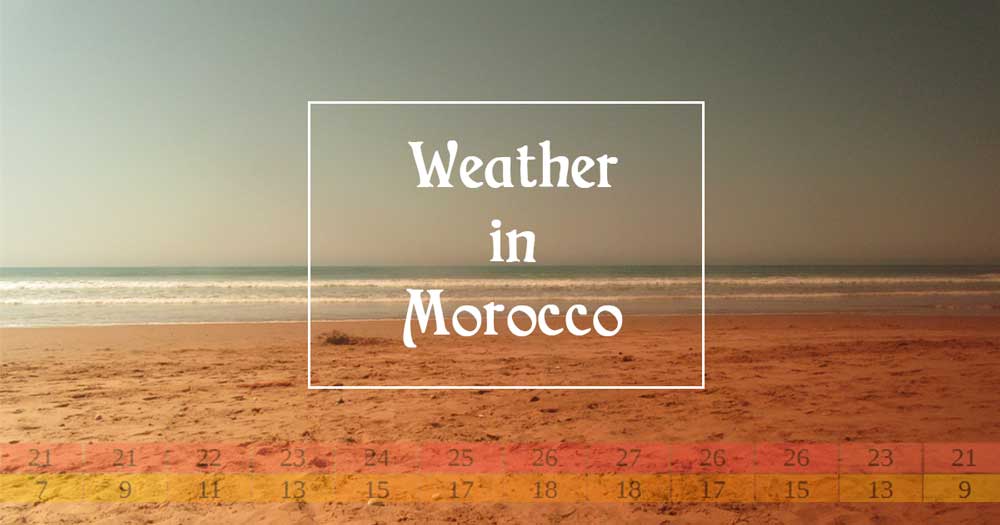
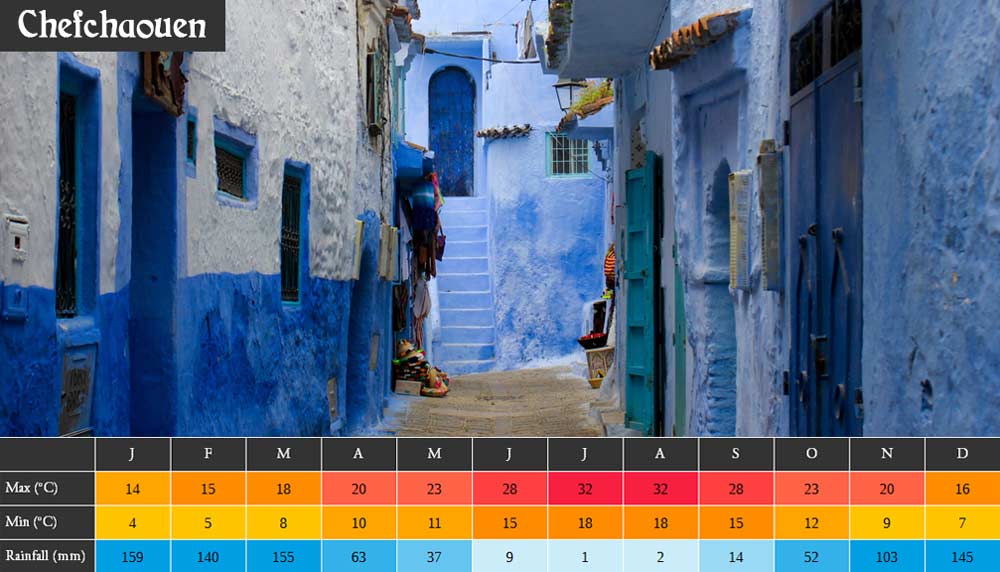
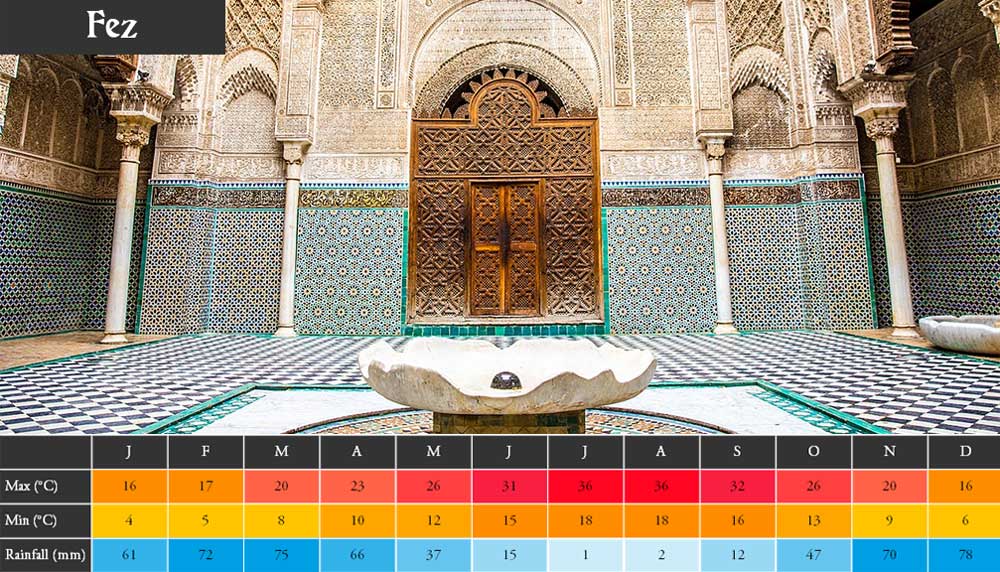
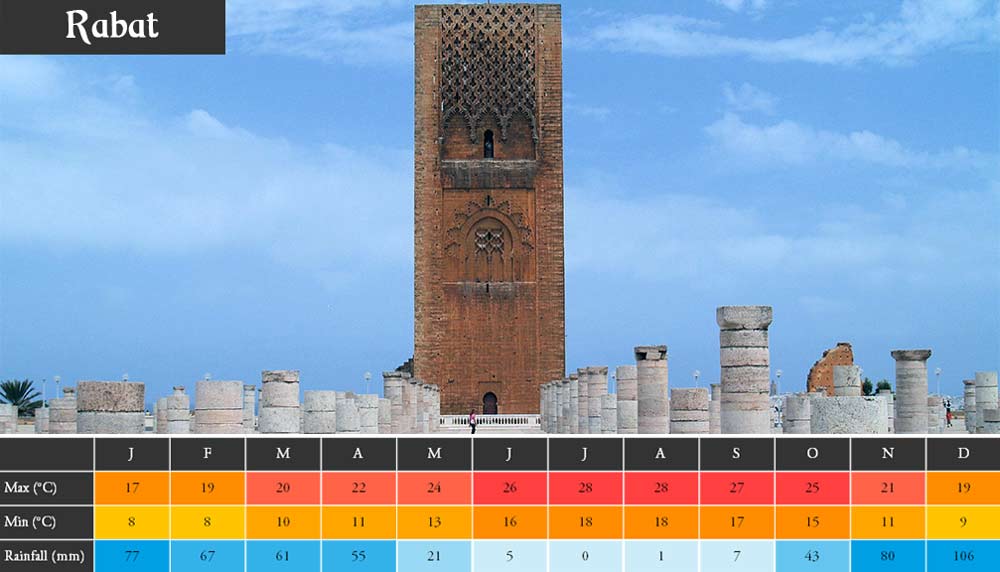
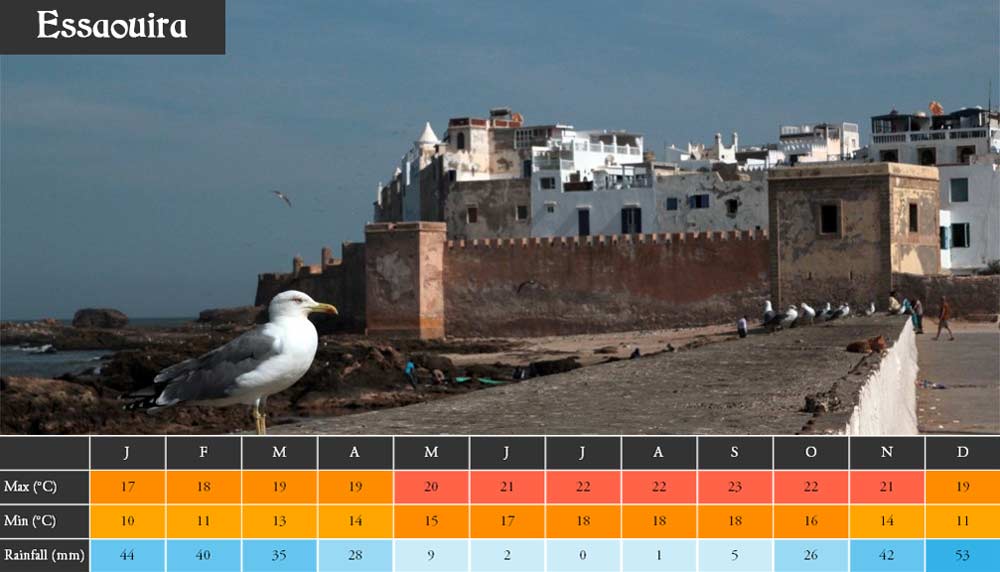
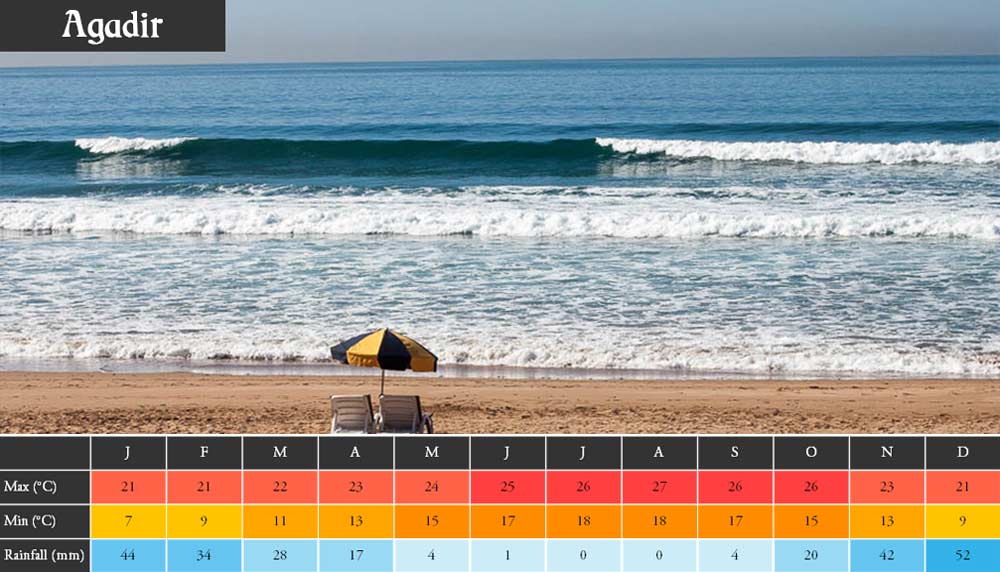
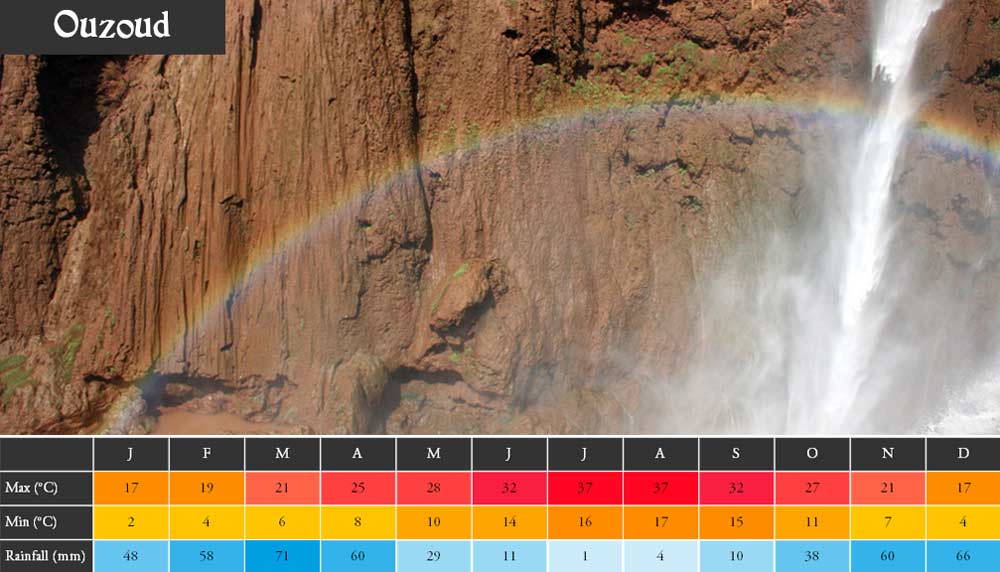
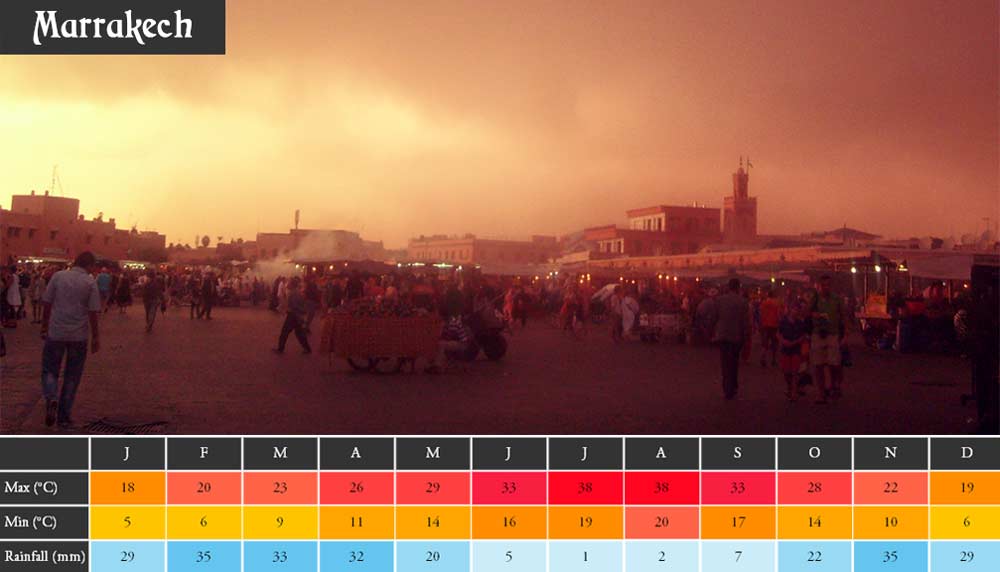
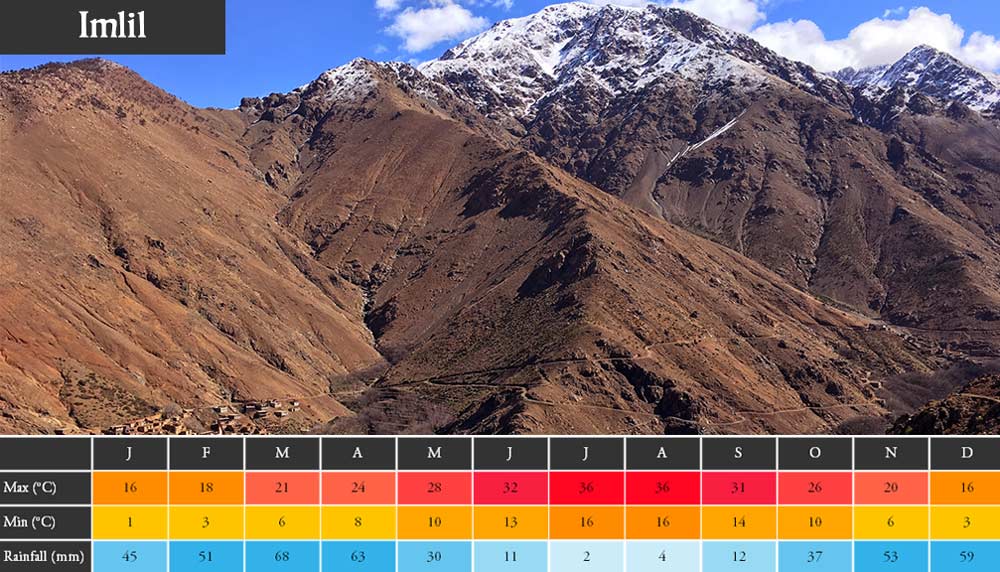
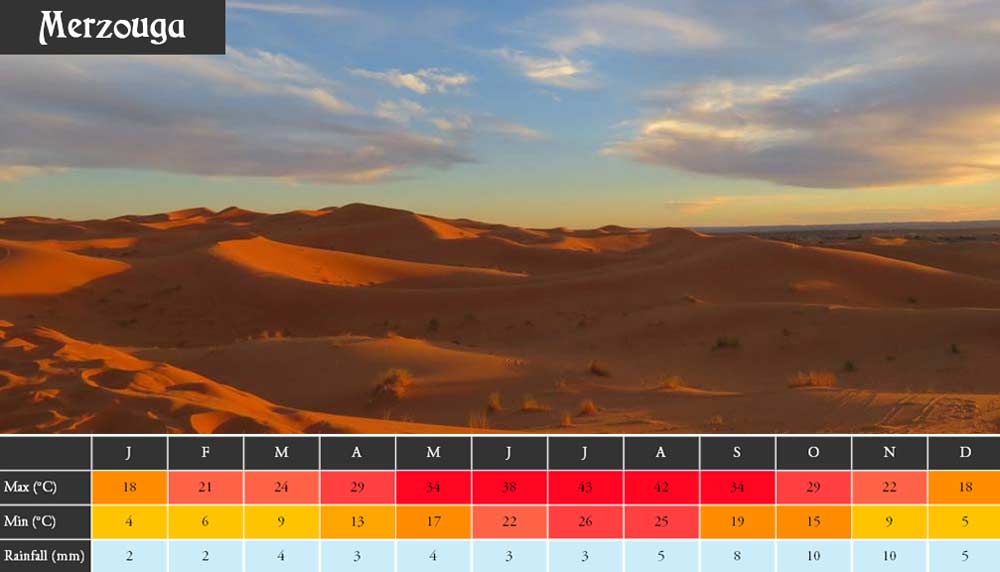
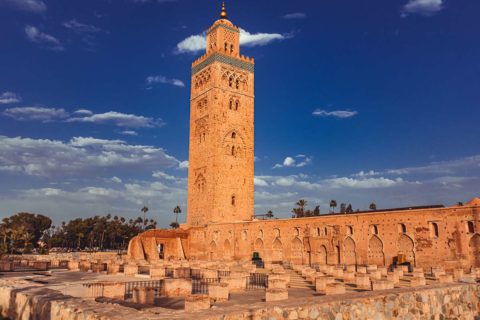
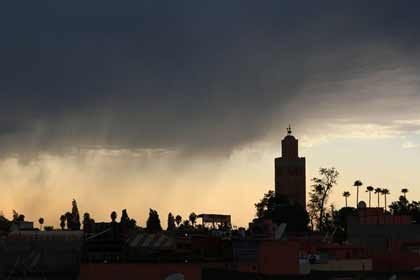
Great blog post! Morocco seems interesting all along the year!